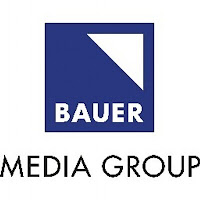For my preliminary task, I had to make a magazine front cover and contents page for my school. When looking back at my preliminary task and my final media product, there is a clear difference between the way the two have been created and finished.
Looking at the front cover for my preliminary task, you can see how the models on the cover are not facing the camera, therefore the effect is not as great as the other cover because of the lack of eye contact. Another thing that is noticeable of the preliminary cover is how there are only cover lines on one side of the page, in my final product I learnt that in order to make the magazine look much more professional, and to suit the style of magazine, I would have to include more cover lines, as well as making them different sizes to show variety. One thing i learnt from my preliminary task was that I should use colours that would compliment each other, as well as making sure that they were easily visible and could be understood. The cover lines on the preliminary task are hard to read because of the colours in the photograph. From this, when I took the photographs for my final product, I wanted to use a darker background in order to make the font of the front cover to stand out and look effective.
Unlike my preliminary task cover, my final product had a picture that I had taken time and went through many pictures to decide which one I thought looked the best. After taking many pictures for my magazine cover then deciding which one was the best, I edited the picture to get rid of any imperfections in the background, so that the picture was the main thing standing out to the audience. I also learnt from my preliminary task that it would be much more effective to have all of the models facial features seen clearly. In the preliminary one of the models has had some of her face cut out from the front cover which makes it look much less professional.
One more thing I learnt during the time it took making my final product was to use a variation of font types and sizes. In the preliminary task, even though I have used different colours, and one other font size, the cover lines look very similar and it is because I had used the same font through out the whole of the front cover. Keeping this in mind, for my final product I made sure to use variation of fonts, colours and sizes to make it look much more interesting to look at,
Looking back at my contents page from the preliminary task, there is another difference from the final product. One thing i learnt about the contents page is that using a smaller font, with more cover lines would make it look more professional and better made. However, my preliminary contents page is quite similar to my final product, and this is because I wanted to capture a minimal look for them, but with the final product, I learnt that I could still put in more writing and colour and still try to capture a minimalist style.
I think that looking back on my preliminary task and comparing it to my final product, I have learnt how to use the conventions of a magazine in a way that looks more professional and much less rushed. By creating my front cover, and working with pictures that captured the whole of the models face, I had to learn how to edit and make sure pictures were perfect before I used them, unlike the way I had chosen photographs for my preliminary task. I have also learnt how to use many different softwares throughout the process of making my final product. When I made my first magazine cover, I stuck to one programme which explains why the cover looks unfinished and unprofessional. I've also learnt how to use my research into making sure that my magazine would appeal to a specific target audience and to a specific genre of music.












